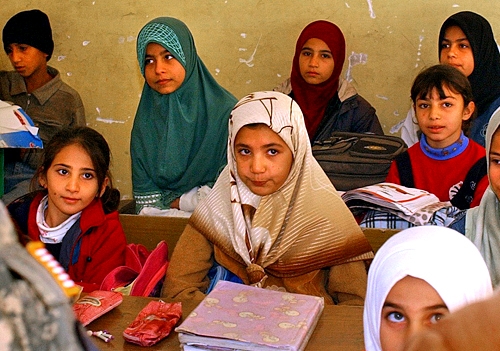The countries of the Gulf Cooperation Council (GCC) have a low population compared with other regions, totaling 45 million people in 2011, less than 1 percent of the global population, a recently published report read.
The report, filed by Kuwait Financial Center (Markaz), highlighting the GCC demographic shift, said the region is young, with 54 percent under the age of 25, although this is expected to rise to 36 years by 2050.
The most populated country is Saudi Arabia with 28 million (65 percent of the total), followed by nearly 8 million in the UAE. The International Monetary Fund forecasts a Compound Annual Growth Rate (CAGR) of 2.41 percent in the next five years and an increase in population to 49 million in 2016.
The growth rate is substantially lower than the CAGR from 2004 to 2008 of 5.9 percent.
By 2025, the GCC is expected to have a total population of 57 million, which is expected to grow with 14 million by 2050.
As of 2011, the lowest average age in the GCC is 24 years in Oman, and the highest is 31 years in Qatar. The average age in the entire GCC region is 27 years with over 20 percent below the age of 15, the report said.
On the other hand, fertility rate in the GCC has been declining, as there is greater awareness of family planning. With the exception of Oman, all other GCC countries’ fertility rates have decreased by more than 50 percent. This could also be correlated to the increased cost of living as well as increased education opportunities for women.
Moreover, GCC pyramids have a skewed bulge in the male bracket, specifically working age, which is due to the high number of male expatriates in the countries, the report said.
Saudi Arabia’s population pyramid is expansive, showing that the majority of the population is below the age of 30, with an average age of 26. This alludes that there is a high birth rate as well as a high death rate and a relatively short life expectancy.
Oman’s population pyramid is the most expansive in the GCC region. Similar to Saudi Arabia, Oman has the second highest population of nationals compared to expatriates in the region.
Bahrain is the least populated country in the GCC. Its population pyramid shows that there is no huge discrepancy between the age groups. There is also an equal distribution of males to females, with exception of the 40 to 60 years age brackets.
Qatar has the highest expatriate rate in the region. Its population pyramid alludes to it with the higher percentage of males in all working age groups above the age of 20. Qatar’s demographic boom is accompanied by its economic boom that gave rise to many opportunities for expatriates. However, population growth is expected to decrease, as expatriates exit to be replaced by local talent, the report said.
Kuwait’s pyramid is less expansive than Saudi Arabia’s, with most of its population below the age of 35 years, but over 20. There is also more discrepancy between the higher numbers of males to females, particularly in the 20 to 40 age brackets. This is attributed to the high flow of expatriates looking for employment, usually in this age bracket. The high expatriate rate is expected to decrease, as more nationals enter the labor force and demand jobs.
Similar to Kuwait, the UAE also has a very high expatriate rate. UAE’s population pyramid would look more expansive if it was exclusive to the national population. However, its total population, including expatriates, is a more contractive pyramid with the majority of the population between the ages of 20 and 60. The UAE population’s growth is expected to continue, driven by a steady inflow of expatriates, according to the report.
The majority of the GCC population consists of expatriates. Based on 2010 data, Credit Suisse reported Qatar as having 86.5 percent expatriates, followed by 70 percent and 68.8 percent in Kuwait and the UAE, respectively.
The GCC region as a whole has an average of 53.43 percent of expatriates compared to an average of 9.5 percent in the MENA region, the report said.
The positions filled by expatriates range from low-paying, low-skilled construction jobs to highly professional and specialized jobs. Nearly 4.5 million nationals are potentially entering the job market compared to 5 million nationals who were employed in 2010. The IMF predicts that an additional 2 to 3 million nationals will not be able to find employment, according to the report.
17 July
Arab News

























































